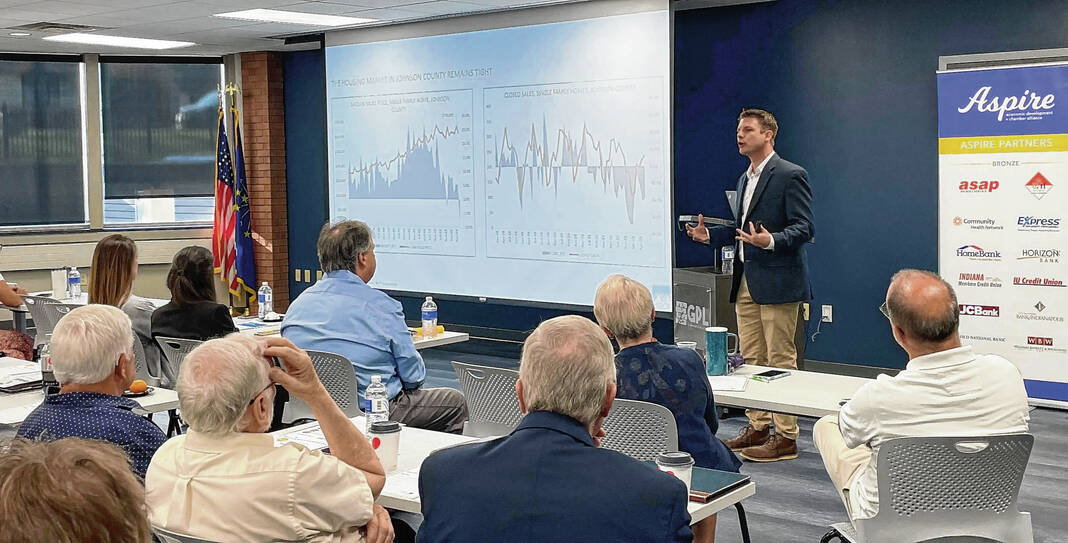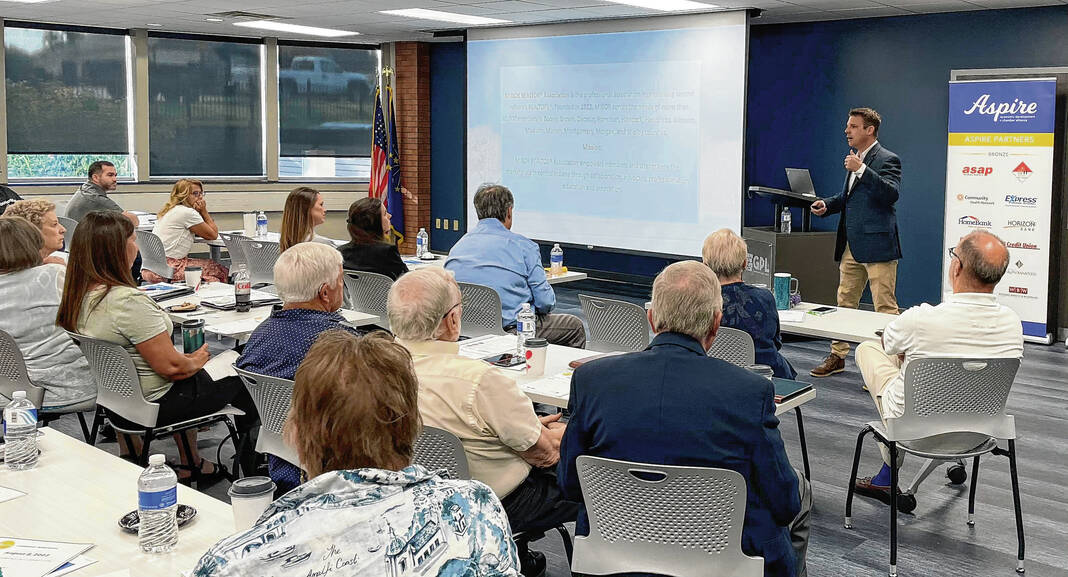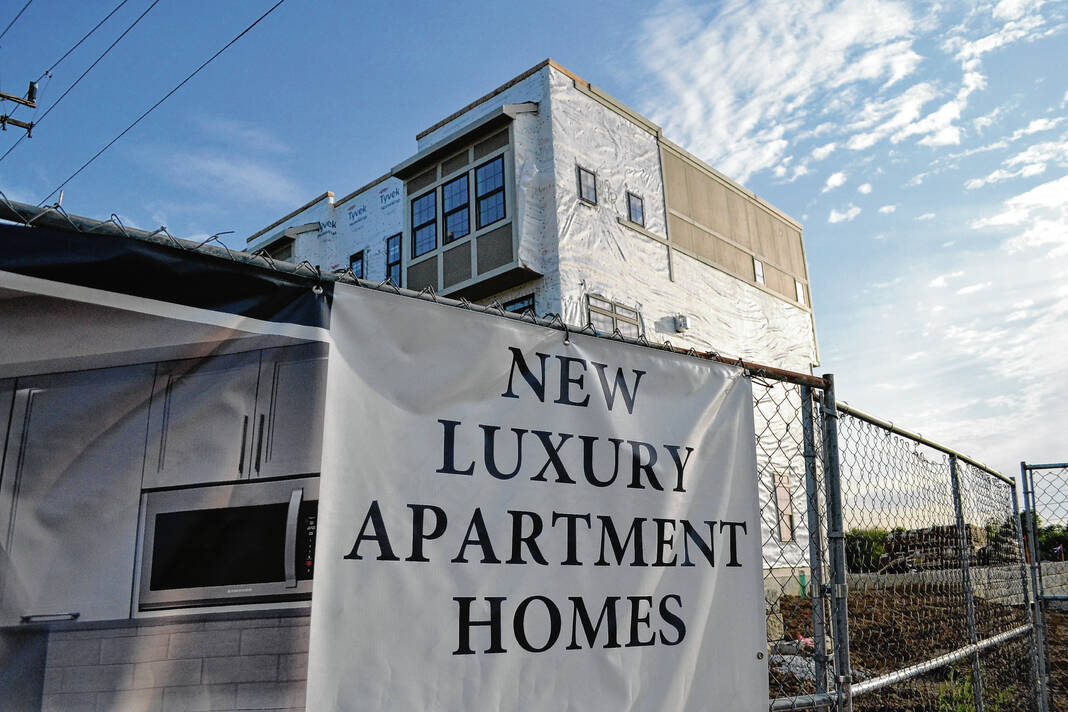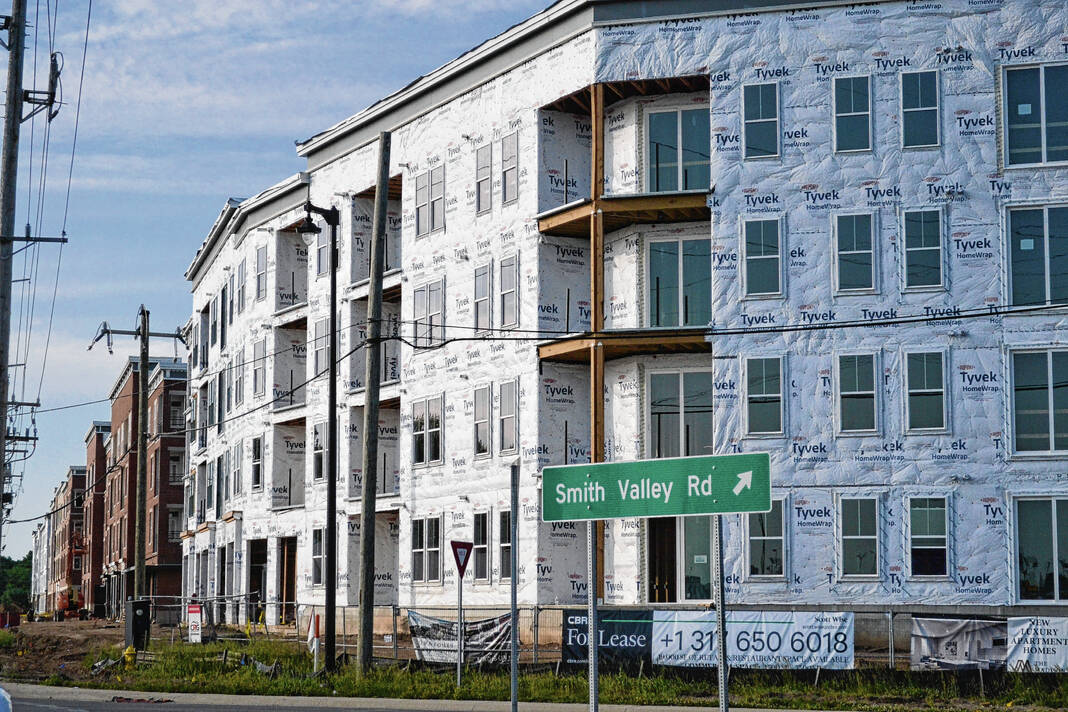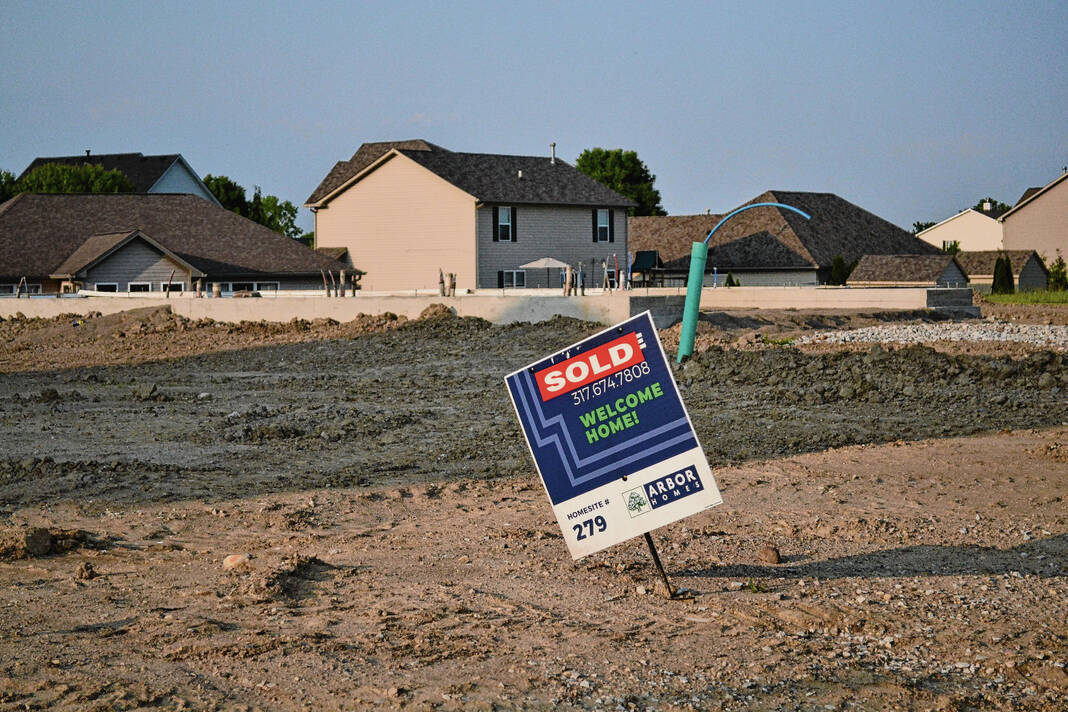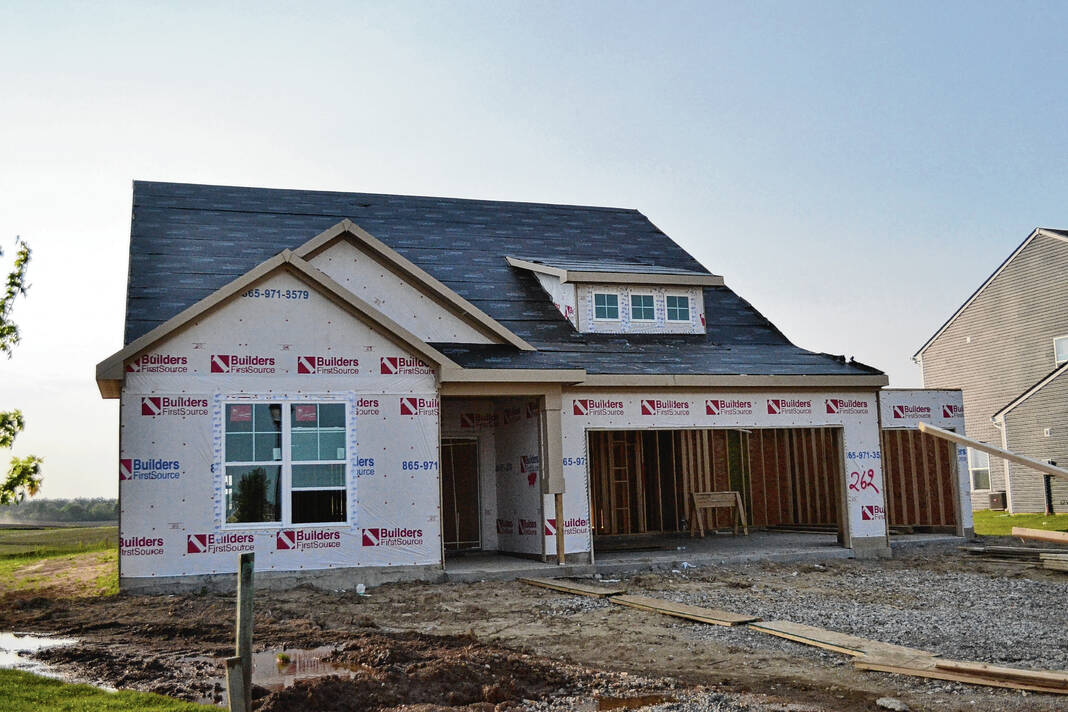Slowing home sales and rising interest rates are continuing to affect the local housing market.
Speakers and panelists discussed the state of the Johnson County housing market, housing inventory, myths and affordable housing during an Aspire Johnson County Community Workshop Wednesday at the Greenwood Public Library. Over 65 people attended the two-and-half-hour workshop, including State Rep. Michelle Davis, R-Whiteland, Greenwood City Council Member Linda Gibson, business and nonprofit leaders and other local officials.
Hosting the workshop is part of Aspire’s commitment to attracting employers and ensuring the county’s workforce is supported, said Amanda Rubadue, vice president of economic development.
“Our work is to attract talent into Johnson County and make sure that we’re supporting our workforce,” Rubadue said. “Housing becomes a really big part of that, and diverse housing across the board.”
State of the market
Home sale prices have remained pretty consistent over the last year but are still high. Median sale prices have also been going up in the region, said Brad Coffing, a research analyst for the MIBOR Realtor Association.
Comparing June 2022 to June 2023, the median sale price has stayed the same: $300,000. However, the year-to-date rate has risen by 4.7% from around $275,000 in January, February and March, data from MIBOR shows.
However, Johnson County’s median sale price has dropped by 7% year-to-year to $300,000 in June 2023. The year-to-date price is up 1.7% since January, data from MIBOR shows.
The number of closed sales is down 19.1% compared to June 2022, with 282 in June 2022 and 228 in June 2023. Additionally, new listings dropped 25.1% from 335 in June 2022 to 251 in June 2023, data shows.
Coffing says Johnson County’s home sales follow a seasonal pattern seen throughout Central Indiana: higher sales in the spring and summer before dropping in the fall. Despite this trend, sales rates are still behind what was seen in 2018, driven in part by high interest rates, Coffing said.
With higher interest rates, MIBOR analysts were hoping inventory would have an opportunity to catch up. However, this was not the case, he said.
“Inventory is still incredibly low. Part of this is because you’re not seeing new listings going on,” Coffing said.
People need to be able to sell their home to buy and get into their next home, including those wanting to downsize or upsize. But the challenge now is finding homes that meet their criteria, he said.
“Because we’ve essentially lacked diversity throughout the region’s (housing) products, that step really isn’t there. That’s a really tough step to be able to make,” Coffing said.
Higher home prices are also making things difficult. About half of all households in the region are priced out of the housing market, Coffing said.
“There’s still a lot of pent up demand out there in the market,” Coffing said. “Unfortunately, you either can’t move to the product that you need to, or entry buyers … are really priced out right now.”
Changing marketplace
Over the last decade or so, housing supply inventory has been built around the traditional framework of what a consumer is — such as a married couple with kids. However, that’s not representative of what is actually happening as more people are living in homes outside of this framework, Coffing said.
“Consumers are not a monolith, right? They really vary,” he said. “Evermore and year-over-year, the people who are buying houses, moving to communities, working these jobs, are very different. It’s natural to assume their housing supply should be able to meet that, should be able to match that demand, and so far, we’ve just not — as a region.”
One of the questions officials and developers should consider as new projects are proposed is how housing can be developed to allow people to build equity and create opportunities.
“It’s just not ‘build, build, build, build, build, build, build,’” Coffing said. “Let’s build the right stuff. Let’s figure out where the product should be. Let’s figure out how products can leverage the abilities of communities and quality of place.”
Coffing also took some time to address several misconceptions about housing MIBOR has seen throughout the region.
For starters, mixed housing products and mixed values do not lower nearby home values, he said. Oftentimes people say the opposite will happen when something with a lower price point goes in near a higher price point, but the projects may not have the same characteristics, Coffing said.
There are also other positive values mixed-use housing products bring, such as more amenities and walkability, Coffing said.
Alternative housing types also do not increase neighborhood crime rates, Coffing said. Data shows it can actually reduce crime at times, he said.
“When you have places where you have vast periods of time where there’s nobody walking on the street, there’s no street lights, you have introduced the opportunity for the mischief,” Coffing said. “But when you have active places, you have people there, you have people interacting with the environment, it has actually been shown to be able to reduce crime.”
Panel discussions
Later, representatives of from regional organizations took part in a panel discussion about housing in Central Indiana and the barriers to affordable housing.
The Indianapolis Metropolitan Planning Organization is working on a study that looks at housing throughout the Indianapolis area — with the exception of Madison County. The goal of the study is to establish where the region is as a whole on the topic, said Andrea Miller, senior planner.
“It’s really easy to just focus on your own community,” Miller said. “… So we look at the way people are moving around the region, we look at the difference between what people would prefer for a housing product between what’s being built, and then we’re also working toward identifying strategies in the toolkit so that, OK, we have a full understanding of what’s going on in the region. Now, what do we do?”
The study will also provide a framework for all members of the IMPO as communities being to move forward on addressing housing. Having the data available is key to figuring out solutions, she said.
Nick Burks, a success coach for the Johnson County Employer Resource Network, told attendees there are a lot of factors affecting people’s abilities to get affordable housing. The network partners with employers to give them a success coach who can give employees in need access to community resources.
Through Burks work as a success coach, he’s spoken to homeless people who are paying $600-$700 dollars a week to live in a hotel with their children. This is an obstacle for people trying to budget for a new home or apartment, he said.
HAND Inc. Executive Director Andrea Davis explained her organization’s role in providing affordable housing. HAND is a Hamilton County nonprofit that looks to promote prosperity and diversity by providing quality housing opportunities for low-income and moderate-income individuals and families in Indianapolis’ northern suburbs.
One trend that Davis has seen is more employers are trying to be part of the solution to housing issues. For example, the city of Bloomington offers housing assistance to its police and firefighters because they want their employees to be able to live in the city, she said.
“That’s encouraging to see, and it’s not something that a developer alone, a municipality alone or an economic development organization (alone) to fix. It really takes the whole community, different industries, different sectors,” she said.


